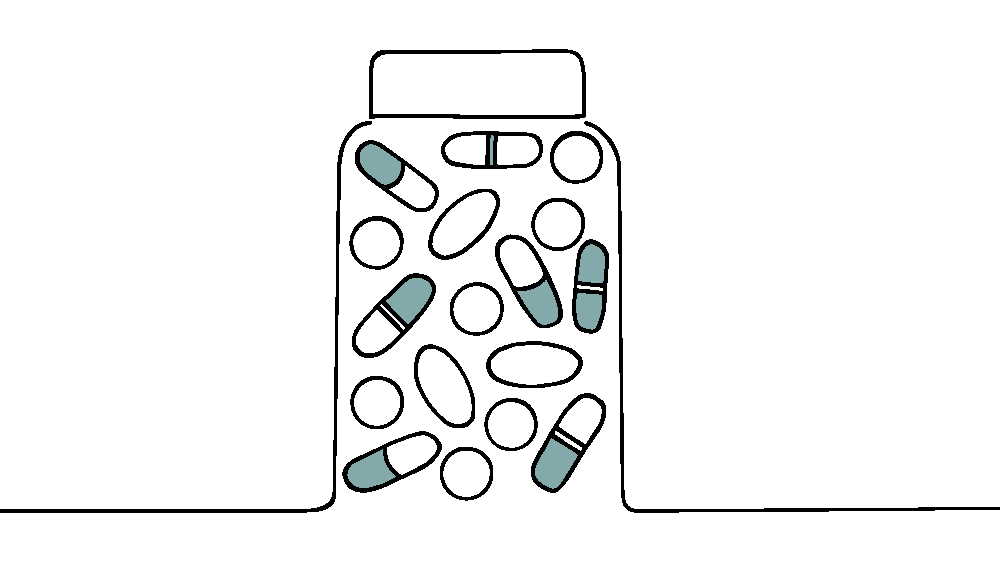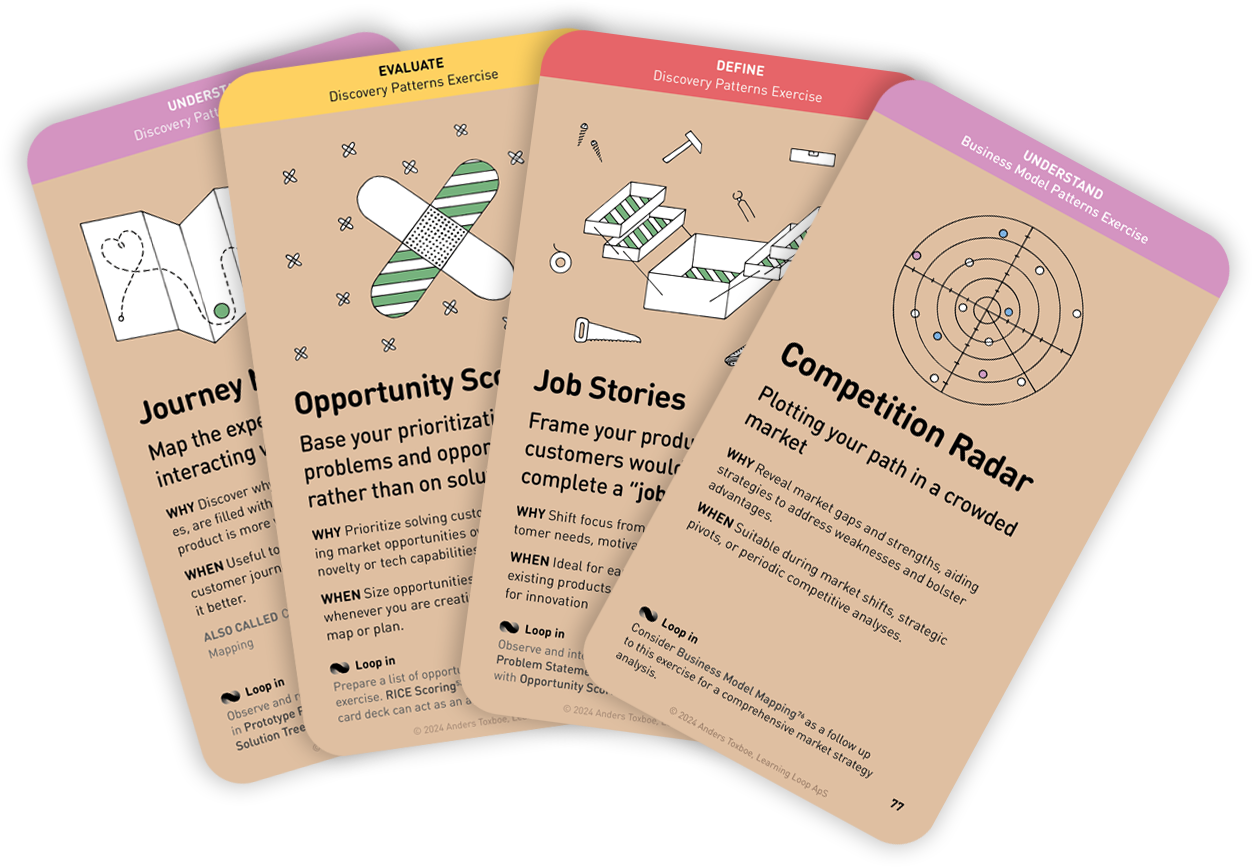Workshop Exercises: Ideate
Painkillers and Vitamins
Identify and develop behavioral approaches to counteract barriers and boost enablers

Why: Turn problems into behavioral strategies to counteract barriers with painkillers and enhance enablers with vitamins
When: Use to ensure that ideation is informed by psychological insights
Unlike traditional brainstorming, which often involves the unstructured listing of ideas, this exercise employs a methodical approach to transform specific problems into actionable strategies applying psychological principles to address identified challenges (Painkillers) and enhance enablers (Vitamins).
Traditional brainstorming often leads to a broad array of ideas, many of which may not be relevant to the core objectives. ‘Painkillers and Vitamins’ keeps the focus tight, ensuring that every idea generated is directly applicable to the identified barriers and enablers.
By grounding the idea generation in psychological principles, a deeper level of thinking is encouraged, pushing participants to consider the underlying motivations and behaviors that drive user interactions.
Instructions for running this play
Before the exercise. Prepare a clearly defined design challenge or problem statement for the group to work on. Ensure it’s specific enough to guide their thinking, yet open-ended to allow for creativity.
- **Present objective and insights
**State the business or user objective for the workshop to work on. Review any insights from artifacts from previous exercises related to this objective, such as user journey maps, known barriers, or enablers. - Introduce insights from psychology
Introduce the Persuasive Patterns card deck or present a list of psychological principles and persuasive techniques. Explain how these can be applied to develop strategies for addressing barriers and leveraging enablers. - Identify barriers and enablers
Using the insights from artifacts and the objective as reference, ask participants to identify barriers and enablers and write each on separate sticky notes in a 5 minute Silent Storming exercise. Arrange them horizontally on a large surface. The Drag & Drive Mapping exercise can enlighten this step. If any of the barriers or enablers can be explained by Persuasive Patterns, note the patterns on the sticky notes. - List painkillers
**For each barrier, consider what might reduce it. These are your painkillers. Do **Silent Storming for 5 minutes using the Persuasive Patterns cards to inspire ideas that might counteract or remove barriers. Write them on separate sticky notes. Let each participant Playback their findings as they place them below the corresponding barrier. - List Vitamins
For each enabler, consider what might enhance them to provide further leverage using the same method as for the painkillers. - **Refinement
**Discuss and refine each idea, considering how it aligns with the psychological principles and the objective. Combine or modify ideas for coherence and effectiveness. - Select the best
Dot Vote to select the most promising painkillers and vitamens strategies. Prioritize based on potential impact, feasibility, and relevance to the objective.
A collection of workshop exercises that will help you ditch dull meetings and facilitate with confidence. It will help you master the design process and have more productive time with your team. The card deck will be ready for purchase in the end of 2026 and is now undergoing rigorous testing.
Reserve your deck!
